How to find a great frequent flyer credit card

Frequent flyer credit cards can be useful if you fly regularly. Not only can you potentially save on flights, they can even give you access to some perks you might not otherwise be able to use. But that doesn’t necessarily mean they’re always going to offer the best benefits for your situation.
What are frequent flyer credit cards?
Frequent flyer credit cards are a type of credit card that’s designed to provide value to people who fly on a regular basis. They might do this in various ways, including:
- Enabling you to earn frequent flyer points on purchases which could help you upgrade your flight seat for free or more cheaply
- Helping reduce the cost of some flights, or providing vouchers which can be redeemed towards flights
- Eliminating or reducing foreign transaction fees
- Providing airport lounge access passes
- Including a level of complimentary travel insurance
Frequent flyer credit cards are just like any other credit card (or indeed any other kind of loan like a personal or home loan) in the sense that there are eligibility criteria you have to fulfil if you want to apply for one, they charge a variety of fees, like a cash advance fee for ATM withdrawals and transfers to other accounts, and they may offer introductory deals to reel you in, like 0 per cent interest for the first 12 months, bonus points for using the card in the initial period and 90 day interest-free periods for the first 18 months.
They do, however, offer some products and services that other cards may not offer.

How do frequent flyer credit cards work?
Frequent flyer credit cards can allow you to earn a specified number of frequent flyer reward points (e.g. Velocity points or Qantas points) for every dollar you spend via the card. You can then use points to purchase available flights and seat upgrades. But that’s not all they do.
They may also grant additional flight-related, ‘card members only’ perks as well. Some may include:
- Extra checked baggage
- Access to airport lounges (usually limited to a number of times per year)
- Priority check-in
- Complimentary travel insurance
Popular frequent flyer credit card benefits
Here’s a closer look at some of the more popular benefits of included with a range of frequent flyer cards:
- No foreign transaction fees. This could be one of the more popular perks associated with some frequent flyer cards for those who travel a lot overseas. When you normally shop with an Australian credit card overseas, you’ll usually pay a currency conversion fee and a fee for using the card on an overseas network. This is usually a percentage of the transaction and can really add up. If your card charges no foreign transaction fees, you could save a lot of money just with that feature. It’s important to note that some overseas providers might also charge you a processing fee which can vary depending on the provider. This is a separate charge to the transaction fees applied by your credit card and are unlikely to be waived.
- Complimentary travel insurance. If your trip doesn’t go as planned for one of the reasons listed in your card’s terms and conditions, such as a medical emergency or lost baggage, this kind of insurance may reimburse you for some costs associated with a delay. It’s always important to make sure you review the Product Disclosure Statement (PDS) of the insurance policy for information about inclusions and exclusions.
- Airport lounge access. If you want to relax in an airport lounge before your flights, you might appreciate cards that offer that access. Just be aware, many of them that do offer lounge access only offer a limited number.
- Priority baggage check-in and boarding. Have you noticed that some airports have special, much shorter, queues for checking in baggage? And some allow certain people to board before everyone else, so they get better spots for their onboard luggage? If you want a more comfortable flight and don’t want to have to get to the airport extra early to compensate for long queues, you might enjoy these kinds of perks.
Importantly, not all frequent flyer credit cards will include the same benefits. It can help to compare a range of cards, including their terms and conditions, to see if you can find one with what you need.
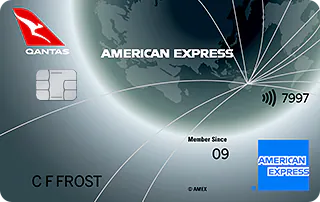
American Express - The Qantas American Express Ultimate Card
Rewards Rate One
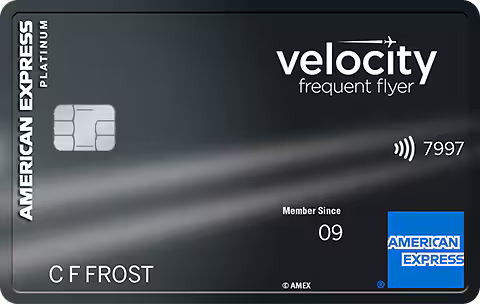
American Express - The American Express Velocity Platinum Card
Rewards Rate One
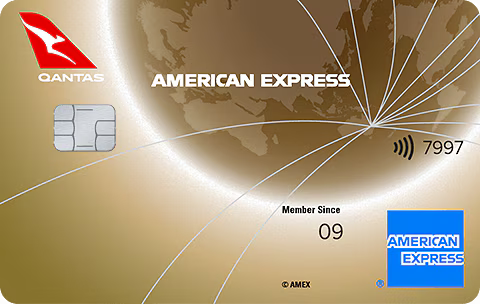
American Express - The Qantas American Express Premium Card
Rewards Rate One
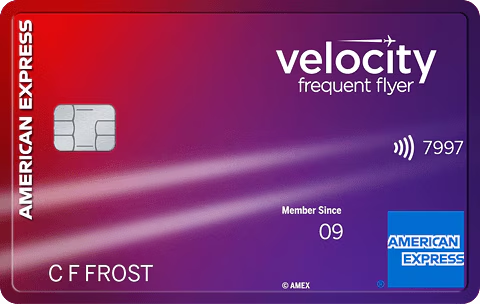
American Express - The American Express Velocity Escape Plus Card
Rewards Rate One
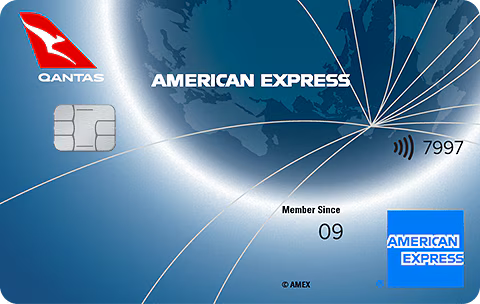
American Express - The Qantas American Express Discovery Card
Rewards Rate One
What types of frequent flyer cards exist?
There are several frequent flyer programs on offer. Two you might be familiar with are the:
- Qantas Frequent Flyer credit card program
- Velocity Frequent Flyer credit card program
Various credit card providers can offer those programs with one or more of their credit cards. If we take Amex as an example, you could choose between a range of options which cater to either Qantas rewards points or Velocity rewards. These cards include both business and personal credit card options.
A frequent flyer card can also be a broader rewards credit card as well. Some such cards grant several kinds of points. For instance, with Westpac Altitude Rewards Cards you can choose to earn Altitude Points, Velocity Points or Qantas Points. The latter types of points are offered as part of frequent flyer rewards programs, and the Altitude Points are delivered via the broader Altitude rewards program.
What's the best frequent flyer credit card?
There is no single “best” frequent flyer credit card out there, because everyone’s needs are different. But there are some things you can do to help find a card that’s suitable for you. This guide could help you get a better understanding of the types of features and benefits that may be available, to help you compare and decide on the type of credit card that could suit.

Pros and cons of frequent flyer credit cards
As with all credit cards and indeed any other kind of loan, there are several pros and cons associated with frequent flyer credit cards. So, before you decide your new credit card will be a frequent flyer version, it would be a good idea for you to review the advantages and disadvantages of that class of credit card based on your own circumstances.
Advantages of frequent flyer credit cards
- Attractive rewards schemes that may help lower the cost of flights and seat upgrades
- Some offer low or zero international transaction fees, allowing you to save when shopping overseas
- Many offer free travel insurance that may cover one or more of the following, which would be outlined in the PDS of the policy; flight cancellation, lost or stolen baggage, delayed baggage, medical expenses and emergency evacuation
- Some offer airport perks like airport lounge access, priority check-in and priority boarding
- Some may even offer travel perks like special event access and hotel or car hire discounts
Disadvantages of frequent flyer credit cards
- Many can have high annual fees and interest rates to help compensate for the cost of their perks
- Some can have high minimum credit limits, which may require you to be earning a large salary due to the minimum income limits that are set by the credit provider on more lucrative-style cards. It could also add to the temptation to overspend
- In some limited cases, points may expire before you’ve had a chance to use them
- It can take a lot of spending to get enough value out of some frequent flyer cards to compensate for the annual fee
- Airlines can change the conditions of their loyalty programs at any time, so your points may be devalued at any time
- Some may include minimum spend requirements which can impact the amount of points you earn
How to choose a frequent flyer card
If you’re looking for a credit card for travel-related activities, a travel or frequent flyer credit card may be a good option for you. When you use these kinds of cards, you may earn points that you can redeem to save on flights, hotel stays and travel entertainment. You may also save on the cost of making purchases overseas. And you may gain access to travel-related perks and benefits like travel insurance, priority boarding and airport lounge access.
These benefits can attract a higher annual fee than some other credit cards. However, depending on how you use it, the perks you get may outweigh the cost of the card.
If you travel by all kinds of travel methods, you may prefer the flexibility of a more generic travel card. However, if you mostly travel by plane with a particular airline, a more specialised frequent flyer card could be more suitable for you.
If you do decide ‘frequent flyer’ is the right class of credit card for you, there’s a huge amount of variety with a lot of competition between lenders trying to attract new customers.
Introductory offers abound, overshadowing potentially higher standard fees, but offering the possibility to earn bonus points and other perks.
The differences between any included travel insurance coverage can also be startling.
So, to get you started with your comparison, here are a few questions to ask yourself:
- Which airline or airlines do you want to fly with? If you have a particular preference, you can rule out card programs that don’t provide benefits with that airline. Thankfully, most programs offer a wide variety. For instance, if you have a Velocity card, you’ll likely be able to redeem your points when flying with partner airlines like Etihad, Singapore Airlines, Air New Zealand and others. If, on the other hand, you have a Qantas card, you’ll likely be able to redeem your points with partner airlines like Jetstar, Emirates, British Airways and more. Just be aware that partners can change at any time.
- Does the card have point tiers? Some card programs offer a different earn rate (number of points) for different circumstances. For instance, you might get one point per $1 spent when shopping overseas, but only three quarters of a point for each dollar you spend in Australia. That might be attractive to you if you do a lot of overseas travel.
- Do the cards you’re considering have a points cap? If so, take a look at how much you spend each month to see if you’re likely to hit that points ceiling. If not, the card could merit further examination. If you will likely exceed the points cap, you may prefer a card with a higher (or no) cap.
If you’d like more information on questions to ask when comparing frequent flyer credit cards, we’ve put together a guide that could help you through the process and explain key terms you should understand to help you to make an informed decision about which card you’d like to apply for.
Our frequent flyer credit card comparison guide also includes details of, and links to, a range of frequent flyer credit cards, so you can compare their key features in one place.